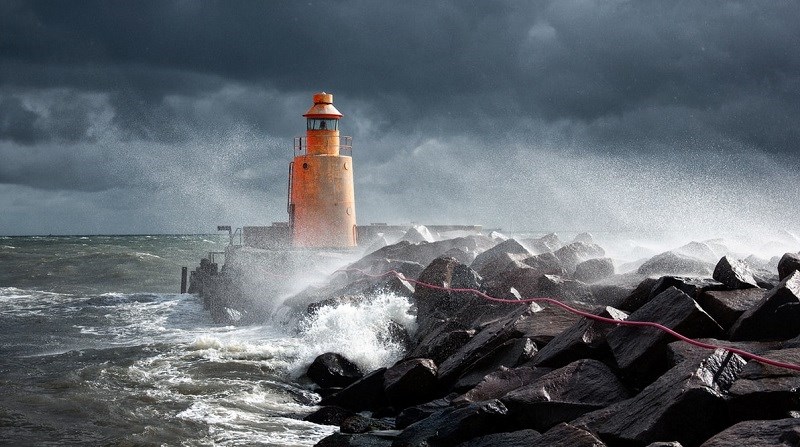
The Russian invasion of Ukraine sent shockwaves throughout global financial markets as countries moved quickly to impose harsh economic sanctions on Russia. Initially the stock markets zigzagged wildly as investors struggled to make sense of the latest developments and assess the ripples from the rapidly changing geopolitical landscape. However, the most immediate impact was felt on oil, as prices skyrocketed.
This was a problem for most of the world. Germany, for example, had already been reeling from three simultaneous blows even before the invasion. “At the end of 2021, there had been much less wind than normal over Western Europe. The 2021 winter had been very cold. Gas reserves were also at very low levels,” lists Tancrede Fulop, senior equity analyst, utilities, at Morningstar, adding that at the time, sun coverage was also poor.
Luckily, gas-powered electricity stations compensated for the low wind and sun energy supply. And then Ukraine was invaded by Russia, the country which made up about 45% of Europe’s gas imports and 40% of its overall gas consumption in 2021 according to Morningstar Energy strategist Stephen Ellis.
That sent the price of gas sky high at US$ 230 per megawatt/hour (MWh) at its peak. At the beginning of April, it had dialed back at US$ 102, the same point where it stood in September 2021. But that was well above the level of US$30 at the end of June when it was close to its “normal” stance of US$20. Now, Europe is scrambling to find new sources of gas, which will most likely be supplied by the U.S. in the form of liquefied natural gas (LNG).
Three Energy Levels
What the Ukraine crisis has taught the world, and mostly Europe, is that countries have to give more consideration to the three levels of energy facilities supply requires, as Darryl McCoubrey, head of research at Veritas Research, explains. At the ‘base-load’ level, you find stations that give you at least 80% uptime thanks to hydro, gas, coal and nuclear. At the ‘mid-merit’ level, where you find mostly wind energy, uptime is between 30% and 50%. Then, at the ‘peakers’ level, you have solar, “which you don’t really rely on in your electricity grid,” McCoubrey comments.
By relying too heavily on wind and solar, and by dismantling its coal and nuclear power base, Germany, for example, sacrificed a large part of its base-load capacity. When an extra input of electricity was urgently required, wind and solar could not deliver, while fossil sources could not be called on to urgently fill the need.
However, ‘renewables’ have certainly not been abandoned. “There is a push for renewable in all countries,” notes Fulop, “though I don’t fully adhere to the idea of reducing dependence on Russian gas through renewable.” McCoubrey adds: “Ukraine won’t stop the development of renewable, simply because energy demand is growing. But you need to invest in base-load capacity,” he insists.
“I do think you will see a revitalization of traditional oil and gas, coal, shale oil and gas pipelines,” McCoubrey believes, at least as long as sturdier alternatives to sun and wind can be put in place.
A Revival of the Nuclear Power Discussion
“The best solution is nuclear because it is non-intermittent and doesn’t emit CO2, states Fulop, quickly adding: “However, it will require 10 years before it comes online. The most immediate consequence of the Ukrainian conflict is the postponement in closings of coal-powered electricity facilities, notably in Germany.”
That’s why the Ukraine crisis caused many governments to revise their nuclear plans, notably in Belgium which planned to shut down its nuclear capacity by 2025, but which is considering extending the life of two plants by at least two years. Meanwhile, France is considering the development of small modular nuclear reactors, while four Canadian provinces have announced plans to build five SMRs between 2034 and 2042, the first to be implemented in Ontario, as reported by CBC.
Key Technologies in Use
Carbon-capture sequestration and utilization installations “are developing very strongly”, indicates McCoubrey, who considers CCSU a key technology of zero-carbon plans. Such units could drastically change our perspective on fossil fuels. In a nutshell, he explains: “The more carbon intensive a fuel, the greater the advantage of CCSU. It’s the lowest cost alternative to get decarbonisation.”
To qualify as a base-load facility, a solar cell installation needs to have massive battery backup, something which is not yet feasible and which will carry a cost of US$200 to US$300 per MWh. In comparison, McCoubrey reports, a coal or gas station fitted with CCSU would cost, according to the U.S. Energy Information Administration, somewhere around US$ 70 per MWh.
Many other developments are also being intensified. Europe is considering converting gas-powered electricity stations into hydrogen-powered ones, “but that would happen only at the end of the present decade,” notes Fulop, who also points to plans to build bio-methane and bio-gas stations from residential and agricultural waste. “It’s expensive, he recognizes, but the high price of gas makes these options feasible again.”




















